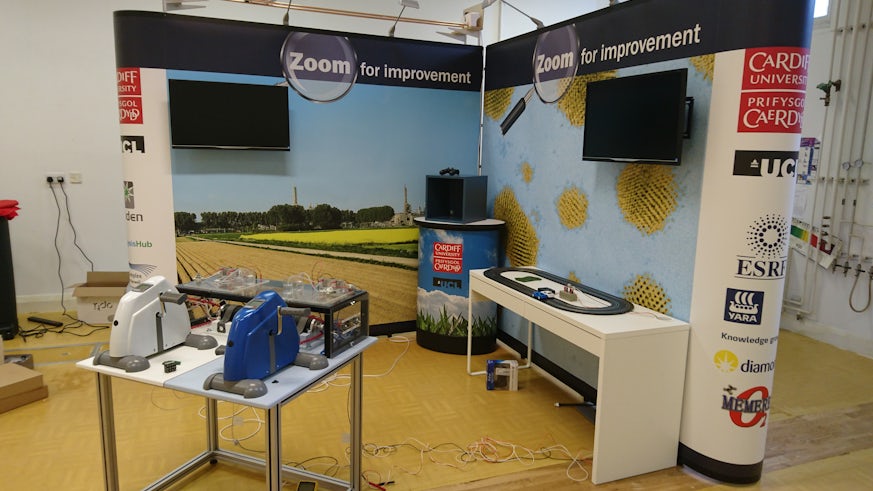Cardiff science on show at annual Royal Society exhibition
4 July 2017

Academics from Cardiff University are showcasing their world-leading research to over 15,000 members of the general public this week as part of the Royal Society’s Summer Exhibition in London.
From the power of catalysis to new ways of observing the Universe, the public will be able to explore how Cardiff University’s research is helping to tackle some of the most pressing issues currently facing humanity.
The ‘Zoom for Improvement’ exhibition, jointly led by the Cardiff Catalysis Institute, will demonstrate how the field of catalysis is being used to produce the goods, services and energy that we use in our everyday lives.
A more sustainable future
Catalysis is the process through which chemical reactions are made more efficient and faster, and works by introducing a range of materials – known as catalysts – into the reaction.
Throughout the week, visitors to the exhibition will learn how the Cardiff Catalysis Institute are developing catalysts to create a more sustainable future, whether this is creating cleaner and more efficient fuels, reducing pollution, producing safer drinking water or transforming biomass into useful chemicals.
They’ll also find out how the scientists actually do this in the lab, learning about the ways in which individual atoms are studied, one by one, using very powerful microscopes in order to understand the process of catalysis at the smallest possible scale.
“Catalysis is a fast moving sector which helps us to generate energy, food and materials such as plastics while reducing our environmental impact.”
“The atomic scale insights that microscopy and X-ray imaging provide are helping us understand how catalysts work at the level required for innovative design of new materials,” said Dr David Willock.
Listening to Einstein’s Universe
Moving from the small scale to large scale, just a stone’s throw away from this exhibition will be another group of Cardiff University scientists talking about colliding black holes and giant supernovae.
At the ‘Listening to Einstein’s Universe’ exhibit, the Gravitational Physics Group will explain how a team of 1000 scientists – collectively known as LIGO – managed to detect gravitational waves for the very first time.

These tiny ripples that travel through space and time are emitted after a violent event in the Universe, such as the collision of two black holes, and have only ever been observed three times since they were first detected in 2016.
Scientists are now able to use these gravitational waves much like a telescope, and look back in time to study how drastic events in the Universe unfold.
At the exhibit, visitors will learn how scientists go about detecting the extremely tiny signal of a gravitational wave when it hits Earth, and will also have access to an interactive game in which they can hunt down black holes in the Universe.
Dr Chris North, STFC Public Engagement Fellow from the School of Physics and Astronomy, said: “The era of Gravitational Wave astronomy has truly begun, and it's very exciting to be able to talk about the astounding technological and scientific developments that it involves...”

“Presenting our research to the public is one of the highlights of the job, and doing so in such a prestigious venue as the Royal Society is a privilege.”
The Royal Society Summer Exhibition will run from Tuesday 4 July – Sunday 9 July at the Royal Society’s headquarters in London with a packed programme of events, including 22 exhibits and a range of talks and activities. For more information, visit the Royal Society website.
Share this story
The Royal Society is a Fellowship of 1400 outstanding individuals who represent all areas of science, engineering and medicine.



